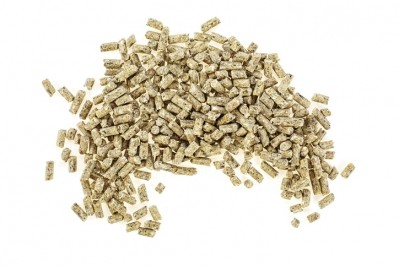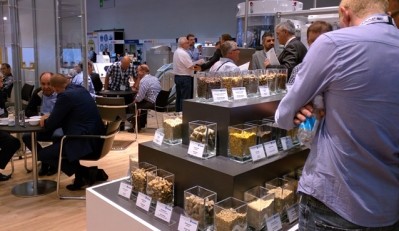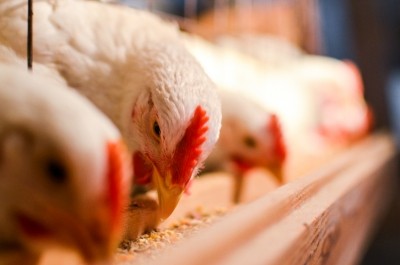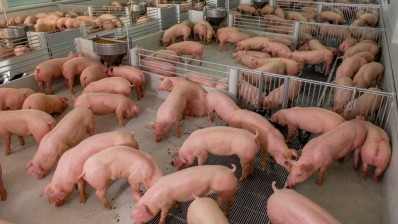Corn processing method may boost cow growth, energy
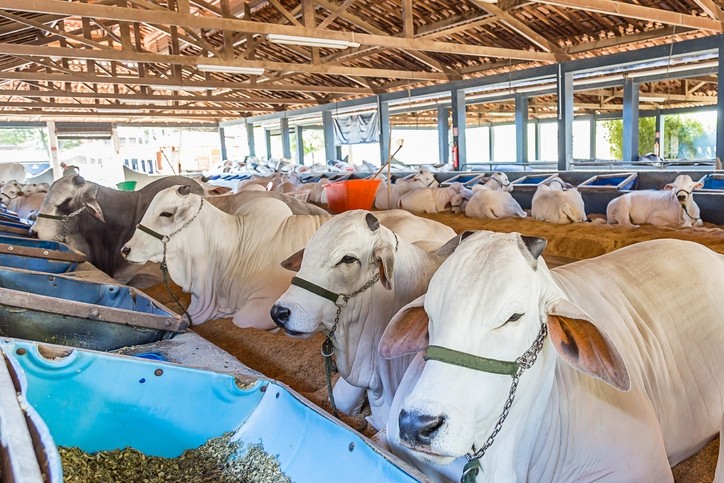
An international team of researchers, based at the University of São Paulo in Brazil and at Kansas State University in the US, explored the use of varying dietary starch levels generated by different corn processing methods on cattle performance.
The study was published in the journal, Animal Feed Science and Technology.
“The objective of this study was to evaluate effects of dietary starch concentrations (DSC) on performance, carcass characteristics, and starch utilization in Nellore bulls,” the researchers said. “Starch levels were evaluated under two different processing methods of flint corn: [high moisture corn] HMC and [finely ground dry corn] FGC.”
The researchers found that bulls receiving diets with high moisture corn (HMC) and higher starch levels were more efficient. Final body weight (BW) and average daily gain (ADG) were not influenced by diet, but carcass gain to feed ratio (G:F) was greater for animals receiving diets using high moisture corn rather than finely ground dry corn (FGC).
“In Nellore cattle, there was no effect on efficiency or dietary net energy content when [dietary starch concentrations] DSC was increased by adding FGC; however, increasing content of HMC by replacing citrus pulp improved growth efficiency and net energy content without affecting [fecal starch] FS content,” they added.
Processing corn for feed use
Demand for beef products has prompted more producers in Brazil to use feeds with high levels of concentrates, the researchers said.
Different grain processing methods have been used to improve the digestibility of grains and boost animal performance, they said. However, many of the processing methods have been created in countries primary using soft endosperm types of corn.
In Brazil, the majority of corn is a flint type or a vitreous endosperm, they said. The starch in flint grains is less digestible than the starch found in soft endosperm varieties and can reduced animal performance and raise feeding costs.
“The investigation and use of grain processing methods for flint type corn is needed to optimize starch digestibility in feedlot cattle,” they said.
Why explore corn use in cattle diets?
Nellore cattle is the major breed of beef cattle raised in Brazil, the researchers said. Growth performance tends to be smaller than other breeds even when cows are raised on high-concentrate diets.
The cattle display similar digestibility of dry matter (DM) even when feeds contain a high, medium or low level of energy, they said. However, other breeds, like Bos taurus demonstrate an increasing DM digestibility as the energy content is raised.
Nellore cattle also tend to have a higher level of fecal starch content compared to crossbred cattle, they said.
“Finely ground dry corn (FGC) is the processing method adopted by most Brazilian feedlots,” the researchers said. “High-moisture corn (HMC) could be effective in improving energy utilization by Nellore cattle, increasing total-tract starch digestibility of flint corn.”
However, the use of high-moisture corn may promote metabolic disorders in cattle, decrease energy intake, profit margins and animal performance, they added.
Feeding trial details
Prior to the start of the feeding trials, half of a field was harvested 109 days after planting to provide HMC – corn was processed and ensiled, the researchers said. The rest of the field was harvested on day 157, dried and processed as FGC.
During the feeding trials, 112 Nellore bulls from a grazing facility were transitioned to one of eight diets, they said. The diets included flint corn grain processed either as HMC or FGC and including 300, 350, 400 or 450g/kg dry matter of dietary starch concentrations.
Cattle were assessed for growth performance, carcass traits and fecal starch content, they added.
Bulls were weighed prior to the start of the feeding trial and completed an 18-day adaptation period prior to the project's start, the researchers said. Both corn processing methods were included in the initial feeds, and trial diets started on day 19 and continued through day 75.
“Bulls were fed for the first 6 days of the adaptation period with a diet containing (DM basis) 400 g/kg SS1, 220 g/kg processed corn, 125 g/kg whole linted cottonseed, 85 g/kg citrus pulp, 85 g/kg soybean meal, 59.4 g/kg soybean hull, 10.3 g/kg limestone, 8.0 g/kg urea, 5.2 g/kg minerals and 2.1 g/kg sodium chloride,” they said. “Bulls were fed from day 7 to 18 of the adaptation period with the second diet containing (DM basis) 250 g/kg SS1, 400 g/kg processed corn, 155.8 g/kg citrus pulp, 100 g/kg whole linted cottonseed, 66 g/kg soybean meal, 11 g/kg urea, 9.7 g/kg limestone, 5.2 g/kg minerals and 1.0 g/kg sodium chloride.”
Feeds and ingredients were sampled weekly to establish the chemical composition, the researchers said. Body weight was noted throughout the study, blood samples were taken on day 74, fecal samples were collected on day 47 and weight gain was established.
Fasted bodyweight was recorded on day 75 and all bulls were harvested at the end of the feeding study, they said. Livers were weighed, liver abscesses were scored, and the rental, pelvic and inguinal fat was recorded.
Rumens were examined for ruminitis and weighed and the “relationship between carcass gain and feed intake (carcass G:F) was estimated,” they said. Subcutaneous fat thickness (SFT) also was measured.
Results
An interaction between the corn processing method (CPM) and dietary starch concentrations (DSC) was found for G:F, the researchers said. However, final body weights, blood pH, lactate concentration and average daily gain were not altered by CPM.
“There was no effect on G:F of Nellore cattle or net energy content of diets when DSC was increased by adding flint FGC, but increasing HMC in diets improved growth efficiency and net energy content,” they said.
Bulls on the HMC 400 and 450g/kg DSC diets were more efficient than those on the HMC 300g/kg DSC diets, they said. Bulls on FGC diets did not have significant differences in G:F.
“When NEm [net energy for maintenance], Neg [net energy for gain], and ME [metabolizable energy] from diets were analyzed an interaction between CPM and DSC was found,” the researchers said. “Bulls fed HMC had a linear increase in NEm, NEg and ME when DSC increased; however, NEm, NEg and ME for bulls fed FGC did not differ with inclusions from 300 to 450 g/kg DSC.”
Bulls receiving diets with FGC ate 14% more than those getting HMC, they said. Bulls on the HMC diets had 6% less energy in their intake than those on the FGC diets.
“The DSC had no effect on final BW or ADG when DSC was increased in the total mixed ration,” they said. “Increases in DSC resulted in linear decreases in ME intake.”
Starch levels did not alter fecal traits, but corn processing method did, they said. “Bulls fed HMC had 2.75 times less FS content than those fed FGC, illustrating the probable greater digestibility of HMC compared to FGC,” they added.
“Consequently, fecal pH was greater for bulls fed HMC compared to those fed FGC,” the researchers said.
However, the method of corn processing did not alter hot carcass weight or dressing percentage, they said. But, for carcass G:F bulls on the HMC diets had a 13% greater carcass G:F than those on FGC diets and carcass G:F increased linearly in connection with DSC.
Bulls on the HMC diets had heavier livers and rumens, but other carcass measures were similar for all diets, they said. A small number of bulls on both diets developed liver abscesses and all diets were linked to the presence of ruminitis or parakeratosis.
Source: Animal Feed Science and Technology
Title: Impact of flint corn processing method and dietary starch concentration on finishing performance of Nellore bulls
Authors: M. Caetano, R. Goulart, P. Rizzo, S. Silva, J. Drouillard, P. Leme, D. Lanna
DOI: published online before print: doi.org/10.1016/j.anifeedsci.2019.03.006
